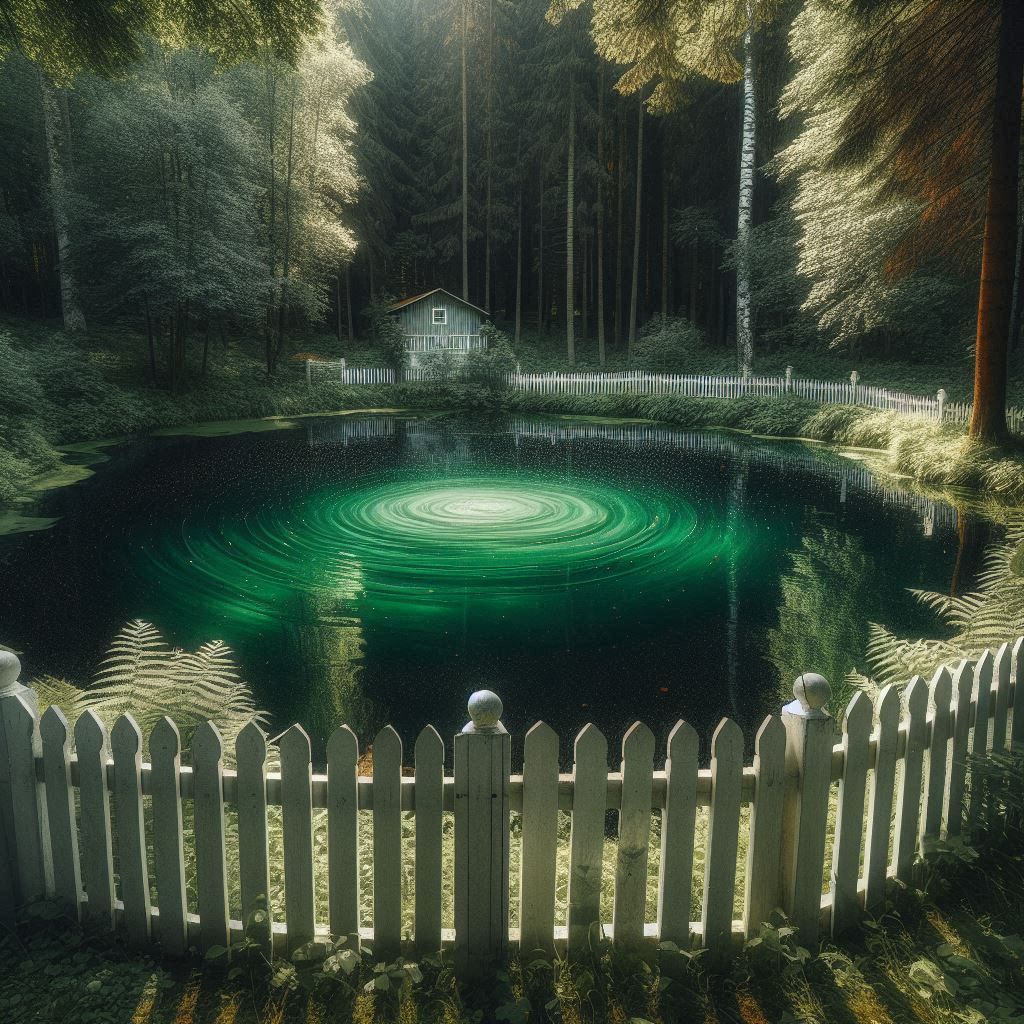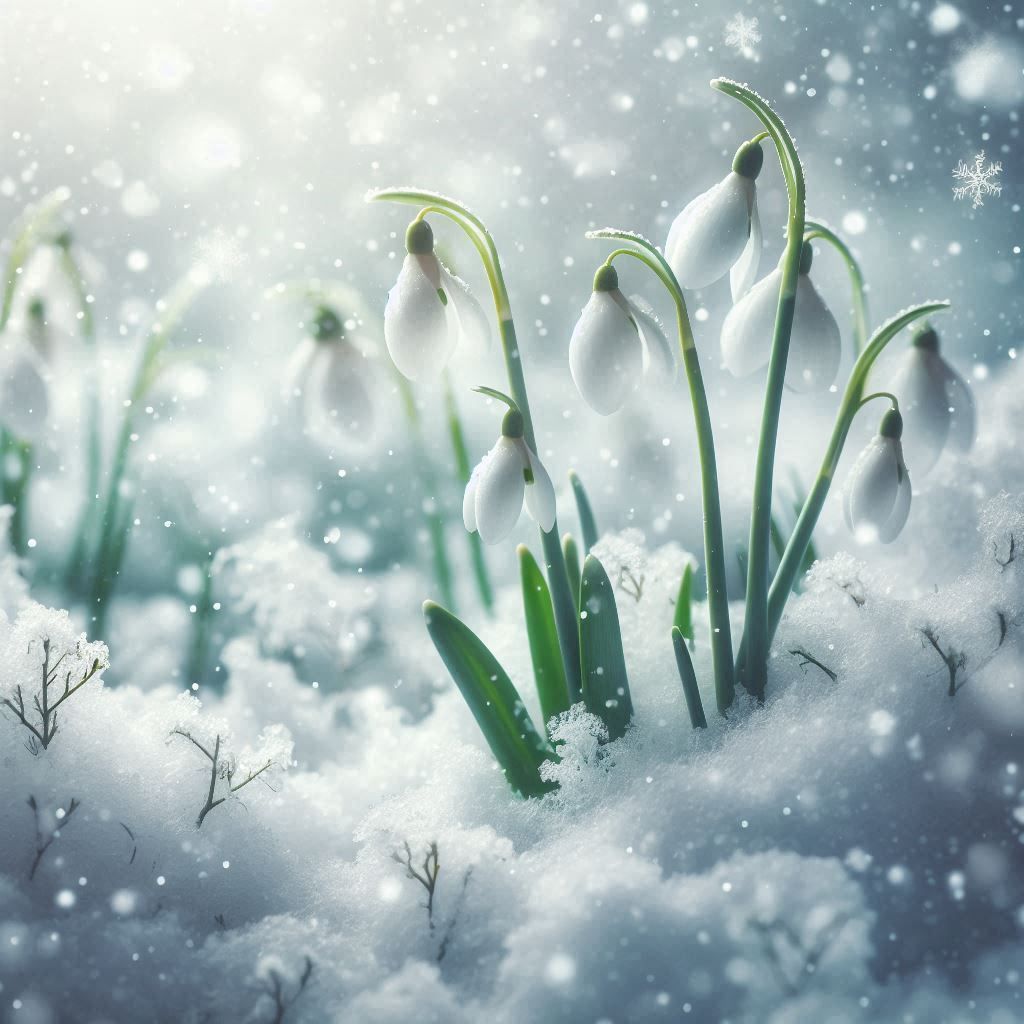April Fool
Here in Lightfall Hollow, the spring beauties are spreading across the forest floor. Tiny, ground-hugging, star-shaped wildflowers with delicate pink petals streaked by a hot pink, they make the earth look as though it is blushing. I imagine in anticipation of the romantic season the spring beauties begin with their blossoming.
In my secret garden, the Siberian squill are up. Another dainty, low-growing flower of early spring, they make the sunless slope where I planted their miniature bulbs light up in electric blue.
Ablaze in vibrant yellow is most of the land immediately surrounding my home. A giant forsythia bush drapes itself over an ornamental bridge and then borders one side of the narrow path that ends in my secret garden. Several more towering forsythias line the path’s other side and stretch out along the pond’s edge, further hiding the garden and adding to its mystery. Although forsythia flowers are flashy, clusters of sunny florets shooting like sparks from bowing branches, even in April when the shrubs bloom in brazen abandonment, the forsythias are what make my secret garden secret and ever a surprise. Like the enticingly wrapped gift any garden is.
It equally delights and amazes me that my garden’s dense thicket of lofty forsythias began as one small, sickly plant that I bought on sale years ago. At the time, I was uncertain it would make it, but it did, and over the years, I took cuttings from the shrub and planted them to hopefully grow near their mother, and as luck would have it, they followed suit. While their mother grew and grew to become the golden giant she is today.
A most interesting plant, that giant. She grew in such a way that she formed a cave-like interior, much like the grapevine shelter I used to play in when I was a child and mentioned in the previous post, “Wending My Way.” It’s silly of me, I know, since I’m now a grown woman of advanced age, but sometimes I crawl inside the forsythia as I once crawled inside that tangled mass of grapevines. I don’t pretend I’m a wolf cub anymore, but I do believe I have more creative thoughts when I’m hunkered down in the middle of the forsythia’s lush oasis. Or perhaps I am simply a fool.
But moving on to the narcissuses, aka daffodils, that each April adorn my corner of paradise in the same showy yellow as the forsythia. How fitting it is that their hearts are trumpets. Since a daffodil is as blaring and attention-getting as the brass musical instrument. While it is also easy to picture a daffodil, with its tear-shaped petals, as the beautiful youth of Greek mythology, Narcissus, who fell so in love with himself that he pined away and died.
Yet, I must confess I too am in love with the narcissus. Over the years, I have planted hundreds of daffodil bulbs. Many a chilly, damp hour in autumn I have spent on my knees, getting both them and my hands cold, muddy, stiff, and sore, digging abodes for daffodil bulbs, wondering who is daffier, the daffodils or me.
In winter, however, I begin to feel differently. I dream of my daffodils sleeping beneath the frozen earth and simply knowing they are there, where I tucked them in, comforts and heartens me. I wonder if they are dreaming too, wishing for brilliance and grandeur. On the off chance that’s true, I send my presumably expectant bulbs subliminal messages, encouraging them to hang in there, that their time to shine is coming.
Then spring does come, and daffodils flare up in dazzling profusion. They fringe the sweeping curve and both ends of the undeniably low, shoddy, and amateurishly made stone wall I built that runs along the hollow’s creek from the western woods to the woodshed. Down in the secret garden, other daffodils encircle the four stone cairns I likewise built that stand as entry portals to a fairy circle. I’m not sure why I raised those cairns. They’re something that crawled out of my subconscious.
One day, for no reason and without any plan, I started stacking rocks from the creek in four circles that eventually became four columns of stone. Though admittedly no more stonemason professional masterpieces than the stone wall, I am proud of my cairns. Since ancient times, cairns have been erected by people all over the world for a wide variety of purposes, including to mark hiking trails. Which makes me wonder if my subconscious is trying to tell me to stay on the path, and I’ll be okay. I’ll be on track to successfully reach trek’s end.
Additionally in the secret garden are daffodils in a long and double row along the creek and in front of another, even more pitiful stone wall of my humble engineering. And most fortunately for me these days, a hundred-plus daffodils bloom outside my kitchen window. That daffodil patch is one lucky break since I am presently stuck indoors nearly all the time, waiting for a broken ankle to mend, getting only a teeny peek at 99.9% of the hollow’s current flowers when my husband drives me to and from doctor appointments.
Still, I can honestly say it is enough to know those bloomers are there, even without me. It’s odd, but there’s tremendous solace and peace in that thought.
As for the daffodils outside my kitchen window, when I gaze at them, they always have their cheery faces turned toward me, brightening my homebound day, and now and again, they nod, as if to assure me that I will soon be back on my feet and in the great outdoors once again.
Bunches and bunches of daffodils grace my home, and I am grateful. Yet, none of the aforementioned are my favorites. My favorites were not planted by me. They were planted more than sixty years ago by a woman I barely knew. She was the wife of one of the seven members of the hollow’s original hunting camp and joint partner in the cabin that was also the vacation cottage of the members’ seven families, including my own family.
That woman is long dead, but I think of her and admire her each early spring when her daffodils bloom in a line a hundred feet long on the steep, rocky, arid, and otherwise practically barren hillside between the pond and the hollow’s road. She must have been as tough and tenacious as her daffodils. She must have had the strength and tenacity that grows with undying hope.
Moreover, to plant her daffodils where she did, she had to have been daffy. She had to have been a true April fool.
First off, when I say the hillside between the pond and the road is steep, I mean really steep. To have clung there and repeatedly dug down into the rock-filled soil a good six inches per bulb, she had to have put herself in a precarious position. She could have easily lost her balance, fallen, tumbled down the hillside, and broken something. Maybe even her neck.
But she did it, and all these decades later, her daffodils still bloom.
Secondly, in those days sixty-odd years ago, Lightfall Hollow was much more secluded than it is today. Add to this that, though this woman was obviously a gardener who would have known that daffodils grow facing the sun, she planted hers where they are virtually invisible, blooming with their backs turned to the road and looking into the woods. So, I wonder. Who in the world did she think would ever see her daffodils?
Yet, the wonderful thing is, I do see her daffodils. They inspire me. She inspires me. Inspires me to try to be strong and tenacious. To attempt the improbable and never lose hope. To be as daffy as a daffodil and a true April fool.

Credit: Bing Image Generator
Share this post via









